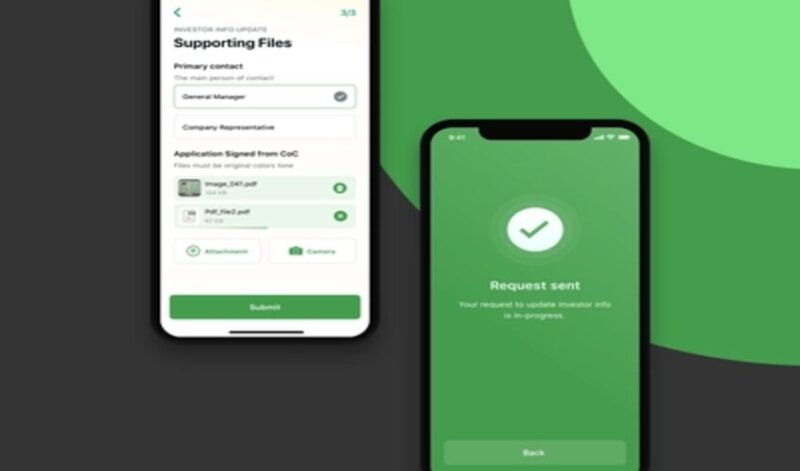The government is relying on more digital platforms to deliver vital services and increase equity among its users, but they don’t all have the same access.
Inclusivity is a necessary component of government design, particularly as it applies to UX. This includes all aspects of the user’s interaction with the product or service, especially for individuals with different abilities and backgrounds.
With inclusive UX design, marginalized communities can be freed of the barriers that restrict them from crucial services, benefits, and information.
Understand Your Audience
The key to inclusive UX design ops is understanding the needs and challenges faced by marginalized communities.
While this term was once used to refer to people on the fringe of society, it’s now expanded to include a range of people that experience barriers that limit their full participation in society, such as:
- LGBTQIA+
- Senior citizens
- Military veterans
- Racial or cultural minorities
- People with intellectual disabilities
- People with hearing, visual, or physical challenges
- People with cognitive impairment
- People on the autism spectrum
- People living in poverty
There are numerous government initiatives to support marginalized groups, but because of the barriers they face, they can’t take advantage of the assistance available to them. For example, these groups may deal with barriers like:
- Media content with audio-only features that exclude hearing-impaired users
- Visually impaired users having a negative experience caused by poor contrast
- Poor responsiveness on small devices that affect users with motor function impairment
- Predefined input on forms that fail to include diverse audiences
- Instructions or tutorials that are too complex for people with low technological sophistication
Understanding and addressing these needs can be done by designing with the user, rather than just for the user. Often, designers rely on narrow research that fails to include the user at each step, leaving critical gaps in ideation that can fail with the final product.
You should conduct research using focus groups, interviews, and surveys to gain insights into the lived experiences of these marginalized groups and what they expect from a product or service. This ensures that the product is not only interactive and responsive, but easy to use and catering to the needs of the users it’s intended to help.
Involve a Broad UX Testing Group
You can engage members of marginalized communities in the design process by involving them in decision-making and testing. This helps you create a more inclusive and relevant user experience.
This involves collecting data from a group as they use interactive prototypes and seeing how they engage with a product. This can reveal gaps in the user flows, barriers that are unique to marginalized individuals, and other valuable insights that may otherwise be neglected with a narrow focus.
After testing, a UX audit can reveal specific barriers that should be addressed in the design process.
Focus on Accessibility
One of the key aspects of government services is serving the masses, which is a large and diverse group. If these services aren’t designed with inclusivity and accessibility in mind, many people with different abilities can be left out of the experience.
Inclusive design ensures accessibility that works for everyone. Though accessibility is often used in the context of disabilities, it can refer to anyone with different abilities that may impact their experience, such as elderly individuals.
To meet these needs, you must rely on a set of accessibility principles that cover a diverse range of concerns.
Empathy
Empathy is at the core of UX design, both in general and with accessibility. Designers must consider the needs of the audience and their concerns when interacting with the product or service.
User Research
User research is a key element of design thinking, particularly when designing for accessibility. You must consult with a diverse range of people, including those with disabilities and differing physical and cognitive needs in real-world context. Learning about these users’ problems invites new perspectives and creative problem-solving that can lead to new innovation.
Inclusivity
Representation and inclusivity are important in design projects, not just with different abilities but with different cultures and languages. In a global environment, products and services must appeal to diverse, multi-cultural audiences, and it’s not enough to simply change the language. Virtually every aspect of the design must be viewed through a new cultural lens, including color theory, reading orientation, dialects, iconography, typography, text expansion, microcopy, and navigational behaviors.
Control on Navigation
One of the most important principles of accessibility in UC design is control on navigation, especially with web accessibility. The products and services used on web browsers or applications can be too complex for some users, but providing several options allows these users to have full control over their experience and interactions.
Context
The context in which the design is used should also be a considered. Users may interact with a site or application in different ways, including sitting on the couch or while driving. The design must be equally responsive in all environments and conditions, which lends itself to accessibility and the different ways users may interact with a product according to their own limitations.
Along with these principles, you should adhere to web accessibility standards, such as the Web Content Accessibility Guidelines (WCAG). In addition, UX consulting can offer new perspectives to fill in gaps in accessibility.
UX Design for Everyone
Inclusive UX design delivers human-centered design at every stage of the process, keeping the needs of all users at the forefront. With government services, this ensures that those with diverse needs can access the resources that matter most to them.
Author Bio:
Jinny Oh is a globetrotting entrepreneur, angel investor, and renowned UX professional with a passion for Design Thinking. Embracing a fully nomadic lifestyle, Jinny has founded WANDR, an award-winning product strategy and UX design firm that operates with a remote team of experts. With a diverse clientele spanning over 300 startups, US Air Force and Fortune 500 companies like IBM, Geico, and Adobe, Jinny has propelled WANDR to the forefront of the industry.
As an advocate for Design Thinking and Remote Work, Jinny has shared her expertise as a keynote speaker, equipping them with the skills needed to excel in the ever-evolving digital landscape.

Aimee Garcia is a senior editor at ReadDive. She has 5+ years of experience in Digital Marketing. She has worked with different IT companies.





